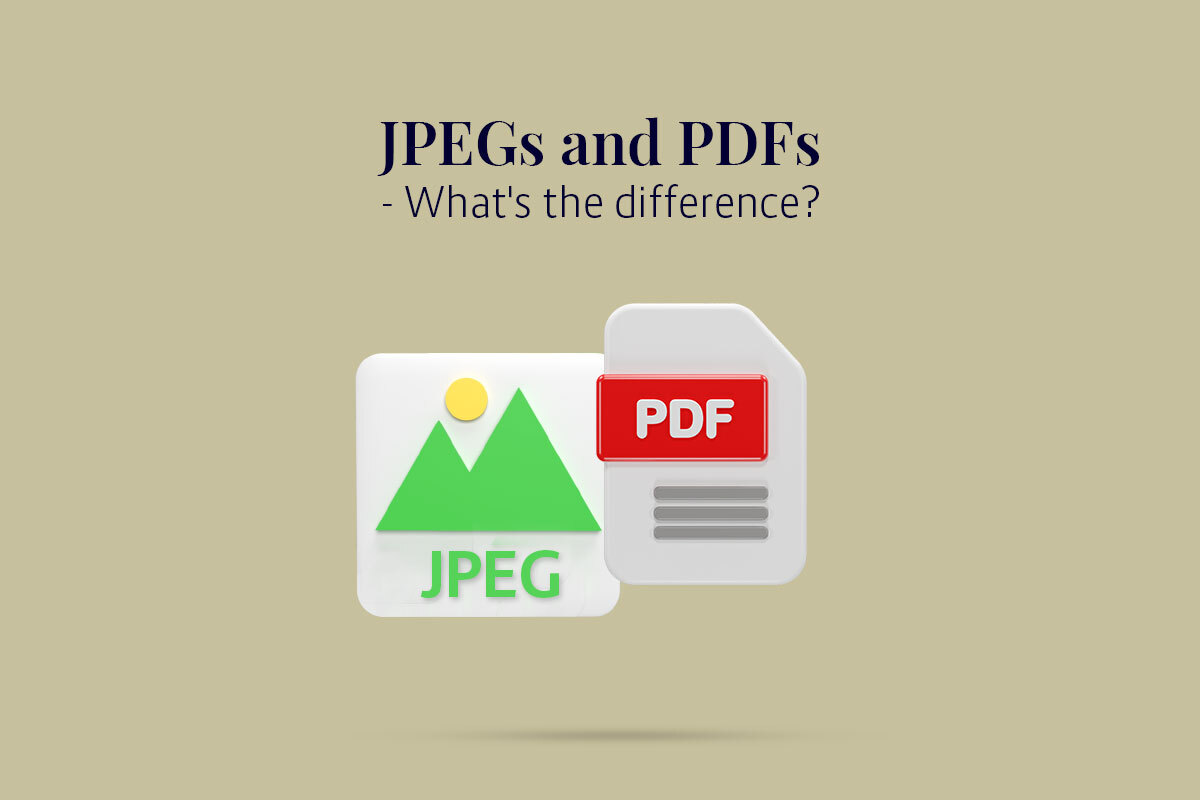When it comes to the list of the most popular digital formats, two names that are present at the top include JPEGs and PDFs. The JPEG format is the most popular digital photo format deemed universally standard. On the other hand, the PDF file format is used extensively by users all around the globe as a universal document format. Even though both JPEG and PDF files share immense resemblance in terms of popularity and usage, they are different from each other in numerous aspects. This article will shed light on what JPEG and PDF files are and how users can convert multiple JPEGs into a PDF file and vice versa, and cover some of the most prominent differences between the two formats based on different parameters. Let us dive right into it:
What is a JPEG file?
The term JPEG stands for Joint Photographic Experts Group, which is the name of the group or organization that developed the popular image file format. As per Adobe, JPEG is the go-to file format for digital pictures. The format is deemed the universal standard for digital images, primarily because millions of users use it all around the globe for capturing and saving images. The file format supports up to 24-bit color. Moreover, it takes the help of lossy compression to compress digital pictures for convenient storage and sharing.
What is a PDF File?
The term PDF stands for Portable Document Format. PDF is a file format developed by Adobe. Millions of users use PDF files globally to display documents in an electronic form, irrespective of the software or hardware used. A PDF file sports a “.pdf” extension name and is highly versatile. All major devices and operating systems, namely macOS, Windows, Linux, Android, iOS, etc., support PDF files. Hence, all users need is a PDF-viewing application to access and open PDF files.
How to Convert JPG to PDF and Vice Versa?
Numerous platforms accept files only in specific formats. For instance, a website may only accept documents in PDF form. On the other hand, an online platform may only require files in the form of JPEG images. Hence, it is important for users to know how to convert JPEG images to PDF files and vice versa. Let us take a look at how users can do both:
There are numerous ways of converting multiple JPEGs into a single PDF file. Windows users can use third-party apps and web-based platforms like iLovePDF to get the job done conveniently. On the other hand, macOS users can get the job done using native utilities like Preview or by opting for third-party tools like Nitro PDF Pro or FIlePane. To know more about the steps involved, visit https://setapp.com/how-to/how-to-merge-jpg-files-into-one-pdf.
Users can also convert PDF files into JPEG ones using web-based converters like PDFSimpli or iLovePDF. Besides this, macOS and Windows users can also use Adobe Acrobat to turn JPEGs into PDFs without hassle.
Major Differences Between PDFs and JPEGs:
Here are some of the most prominent differences between PDFs and JPEGs based on different factors:
Origin:
Adobe Systems created and developed the PDF or Portal Document File format in 1992.
The JPEG or Joint Photographics Expert Groups format was released in 1992 by a group named Joint Photographics Expert Groups.
Purpose:
PDF files are used for storing and sharing text-based documents, images, video files, 3D object designs, digital signatures, etc. It is mostly used for sharing documents and information.
The JPEG format is used extensively for storing and sharing still images, webpage visuals, etc.
Size of Images:
As mentioned earlier, PDF files are also used to store and share pictures. In a PDF file, the standard size of every image is preserved. Thus, no changes occur in terms of the size of the images included.
Exclusively used as an image format, the JPEG format incorporates lossy compression to reduce the size of the digital image. Hence, the format compresses images to save storage space.
Quality of Images:
Since no type of compression occurs, images present in PDF files remain intact, resulting in high image quality.
The JPEG format uses lossy compression, which leads to the deterioration of the image’s quality. Hence, JPEG images feature a comparatively lower image quality than PDF files.
Printability:
The PDF format is preferred by the majority of the masses when it comes to printing, mainly because it retains the quality of the content present inside the file.
The JPEG format is neither suitable nor preferred when it comes to printing. This is because the quality of the JPEG images is significantly lower due to compression.
PDF and JPEG are immensely useful file formats, and each has its strengths and weaknesses. If you are wondering how to convert multiple JPEG files into a single PDF file or vice versa, refer to the aforementioned methods to get the job done conveniently.
